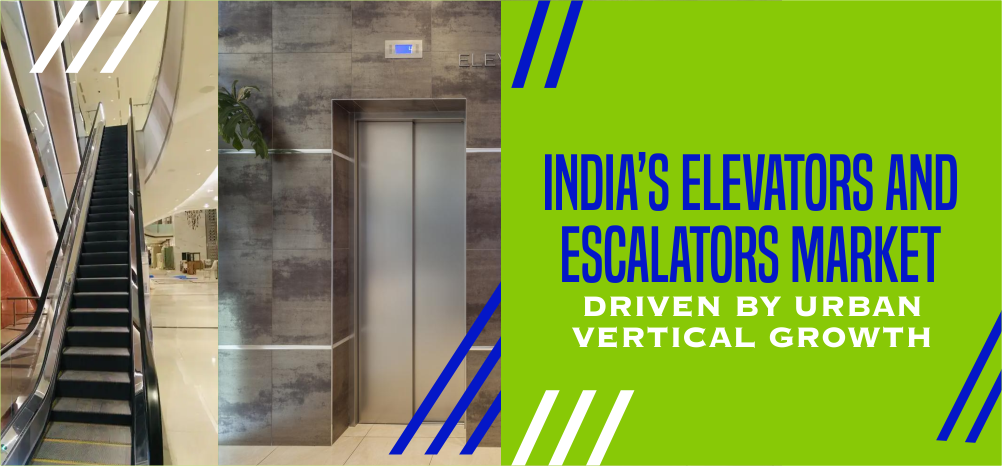In the Union Budget 2025-26, the capital investment outlay for infrastructure was increased to Rs. 11.21 lakh crore (US$ 128.64 billion), equivalent to 3.1% of GDP. The government also established the Infrastructure Finance Secretariat to enhance private sector participation, facilitating investment opportunities across key sectors. Various initiatives have been introduced to attract private investments, particularly in roads and highways, airports, industrial parks, and higher education and skill development. The Second Asset Monetization Plan aims to recycle Rs. 10 lakh crore (US$ 115.34 billion) in capital into new projects between 2025-30, further boosting private sector involvement.
Cement demand in India is projected to remain robust, with a CAGR of 7-8% over FY25-27, according to JM Financial. In the same budget, plans were announced to connect 120 new airports over the next decade, targeting an additional four crore passengers. Road construction is expected to continue its current momentum, with India adding up to 13,000 kilometres in the year ending March 2025, reflecting an annual increase of 5-8%, as per ICRA. India’s National Highways, forming the country’s primary arterial network, have expanded from 65,569 km in 2004 to 1,46,145 km in 2024. This growth has been supported by flagship programs such as Bharatmala Pariyojana, which subsumes the National Highway Development Project (NHDP), and the Special Accelerated Road Development Programme for the North-East Region (SARDP-NE), among others.
India’s logistics market, valued at Rs. 19,53,732 crore (US$ 228.4 billion) in 2024, is projected to reach Rs. 36,73,530 crore (US$ 428.7 billion) by 2033 at a CAGR of 6.5%, supported by over 22 million workers and millions of new jobs expected through initiatives such as infrastructure status for logistics, the Unified Logistics Interface Platform (ULIP), the National Logistics Policy, PM GatiShakti, and logistics parks. FDI inflows in construction development (townships, housing, built-up infrastructure) and infrastructure activity sectors totalled Rs. 2,33,188 crore (US$ 27.21 billion) and Rs. 3,15,768 crore (US$ 36.85 billion), respectively, between April 2000 and June 2025. Production in steel, cement, fertilizer, and electricity recorded positive growth in July 2025.
The Index of Eight Core Industries recorded a final growth of 2.2% in June 2025, while cumulative growth for FY26 (April-July 2025) stood at 1.6% compared to the same period last year.
Coal: Output fell 12.3% YoY in July 2025, with FY26 (April-July 2025) down 3.1%.
Crude Oil: Production slipped 1.3% YoY in July 2025, FY26 (April-July 2025) down 1.7%.
Natural Gas: Output declined 3.2% YoY in July 2025, FY26 (April-July 2025) and down 2.6%.
Petroleum Refinery Products: Production fell 1.0% YoY in July 2025, FY26 (April-July 2025) down 0.3%.
Fertilisers: Output rose 2.0% YoY in July 2025, FY26 (April-July 2025) and went down 2.2%.
Steel: Production surged 12.8% YoY in July 2025, FY26 (April-July 2025) up 8.5%.
Cement: Output grew 11.7% YoY in July 2025, FY26 (April-July 2025) up 8.9%.
Electricity: Generation edged up 0.5% YoY in July 2025, FY26 (April-July 2025) down 1.0%.
As of July 2025, India’s steel demand continues to be led by the infrastructure and construction sectors, with government projects contributing 25-30% of usage, supported by a 12% safeguard duty on imports. The country’s total installed electricity capacity reached 476 GW in June 2025, including 240 GW from thermal sources and 235.7 GW from non-fossil fuels, of which 226.9 GW is renewable (110.9 GW solar and 51.3 GW wind) and 8.8 GW nuclear. India’s National Highways network expanded to 1,46,342 km in FY25, with 10,660 km constructed during the year, forming the primary arterial network of the country, strengthened through flagship initiatives such as Bharatmala Pariyojana and the Special Accelerated Road Development Programme for the North-East Region (SARDP-NE).
Indian Railways set new records in FY25, earning Rs. 2,62,000 crore (US$ 30.58 billion) in revenue and achieving a freight loading of over 1.61 billion tonnes, marking the fourth consecutive year of record-breaking freight performance. Passenger traffic increased by 5.07% with 715 crore passengers, driven by a rise in reserved class travel. Under the Union Budget 2025-26, a record CAPEX of Rs. 2,65,200 crore (US$ 31.43 billion) has been allocated for Railways, including the manufacturing of 100 Amrit Bharat, 50 Namo Bharat, and 200 Vande Bharat trains, while revenue receipts are projected to exceed Rs. 3,00,000 crore (US$ 34.33 billion) for the first time. Indian Railways also achieved 100% electrification of its broad-gauge network in 22 out of 29 states and union territories, reducing diesel consumption by approximately 136 crore litres between 2018-19 and 2023-24, enhancing haulage capacity and improving efficiency. The ‘Green Energy Project’ further emphasizes renewable energy integration for a more environment-friendly railway network.
In May 2025, Prime Minister Narendra Modi inaugurated the Vizhinjam International Seaport in Kerala, India’s first transshipment hub, developed at a cost of Rs. 8,867 crore (US$ 1.03 billion). L&T Energy GreenTech announced India’s largest green hydrogen plant at IOCL Panipat Refinery, producing 10,000 tonnes annually for 25 years using renewable energy. In parallel, Larsen & Toubro (L&T) formed the L&T Green Energy Council to advance global green energy solutions, while BHEL launched Harit BHEL to support renewable energy, energy efficiency, and sustainability goals. GMR Innovex, part of the GMR Group, is developing digital solutions to enhance airport passenger experience, while the GMR Aero Academy and School of Aviation are preparing a skilled workforce for the growing aviation sector. GMR Airports also joined the UN Global Compact, committing to sustainable aviation and net-zero emissions. Adani Ports and SEZ is expanding into high-growth markets like the Philippines, Vietnam, and Indonesia, targeting 140-150 MMT international throughput by 2030, alongside refinancing and new investments of Rs. 12,000 crore (US$ 1.40 billion) in 2025.
Infrastructure development continues under PM GatiShakti, which has integrated 44 Central Ministries and 36 States/UTs, assessed 208 major projects worth Rs. 15,39,000 crore (US$ 178.89 billion) and identified 52 critical projects to connect maritime ports and inland waterway terminals. India’s express logistics and courier sector is projected to grow from Rs. 78,525 crore (US$ 9 billion) in FY25 to Rs. 1,57,050-1,91,950 crore (US$ 18-22 billion) by FY30, supporting 6.5-7.5 million jobs, driven by e-commerce, MSMEs, and infrastructure expansion. Major ports recorded a 4.35% rise in traffic, handling 854.93 million tonnes during FY25. The Infrastructure Investment Trust (InvIT) market is projected to grow to Rs. 22,10,802 crore (US$ 258 billion) by 2030, up from Rs. 6,28,108 crore (US$ 73.3 billion) in FY25.
Housing and urban development remain key priorities, with the Union Housing and Urban Affairs Ministry’s budget for FY26 increased by 18% to Rs. 96,777 crore (US$ 11.07 billion) and the PM Awas Yojana (Grameen) targeting two crore additional houses in the next five years. GST 2.0 is expected to reduce construction costs by 3.5-4.5%, lowering housing prices by 5-8% and boosting demand, particularly in the affordable and mid-segment markets. Real estate PE investments rose 28% in Q1 FY23, reflecting market recovery. Cement volumes increased by 9% in May 2025, with FY26 volumes expected to grow 6-7%, supported by government infrastructure push and real estate activity. Six new urea units added as of March 2025 increased capacity from 207.54 LMTPA in 2014-15 to 283.74 LMTPA.
India’s energy and utility sectors have seen significant FDI inflows, with Rs. 1,69,690 crore (US$ 19.80 billion) invested in the power sector between April 2000-June 2025, and a FY26 budget allocation of Rs. 21,847 crore (US$ 2.51 billion). Transmission lines of 220 kV and above measured 4,94,994 ckt km with 13,54,103 MVA AC transformation capacity as of May 2025. The authorized natural gas pipeline network totals 34,233 km, with 25,429 km operational. Optical fibre coverage reached 6,92,428 km by December 2024, serving 2,09,281-gram panchayats. Telangana released Rs. 1,000 crore for rural road construction.
The government continues to prioritize roads and highways, with the Ministry of Road Transport & Highways allocated Rs. 2.87 lakh crore (US$ 32.94 billion) in FY26, targeting Rs. 35,000 crore (US$ 4.02 billion) in private investment. National Highways and transport corridors have been expanded under multiple initiatives over the past eight years, reflecting their critical role in economic and social development. India’s infrastructure ambitions include spending US$ 1.723 trillion (Rs. 143 trillion) between FY24-30, focusing on power, roads, renewable energy, and electric vehicles, while committing to net-zero carbon emissions by 2070 and achieving 500 GW of renewable capacity by 2030. The Department of Telecommunications and IT received Rs. 81,005.24 crore (US$ 9.27 billion) in the Union Budget 2025-26.
Looking back, Indian Railways flagged off 10 new Vande Bharat trains on March 12, 2024, while NTPC and NALCO signed an MoU in February 2024 to explore providing 1,200 MW of continuous power for NALCO’s Odisha smelter expansion. Earlier, in April 2023, the PM GatiShakti network planning group approved four railway projects, contributing to India’s robust infrastructure growth, complemented by Smart Cities Mission progress, with 94% of 8,067 projects completed by June 2025, involving investments of Rs. 1,64,000 crore (US$ 19.14 billion) and 99.44% of the Rs. 47,652 crore (US$ 5.56 billion) budget released to 100 cities.
India’s infrastructure landscape stands at the forefront of the nation’s growth story, underpinned by record government capital expenditure, strong private participation, and a clear vision for sustainable, inclusive development. Expanding connectivity across roads, railways, ports, and aviation, coupled with advancements in green energy and digital infrastructure, is transforming India into a global hub for logistics, manufacturing, and innovation. With continued reforms, technology integration, and forward-looking investments, India is well-positioned to achieve its goal of building world-class infrastructure, driving economic resilience, and paving the way towards becoming a US$ 5 trillion economy in the coming years.














